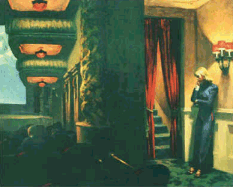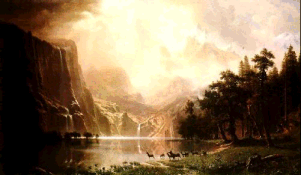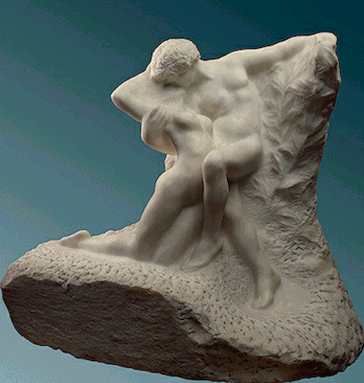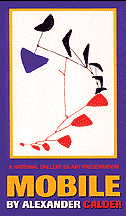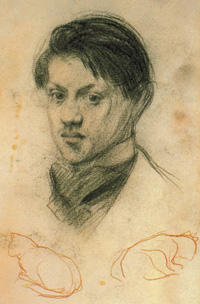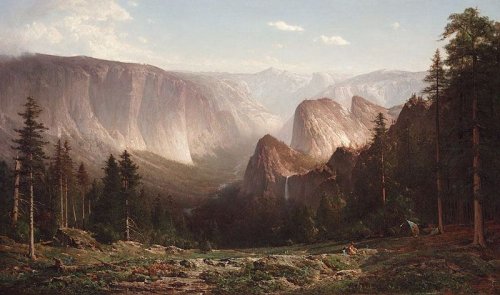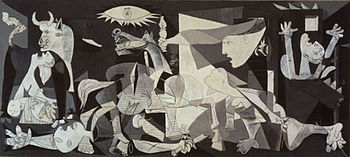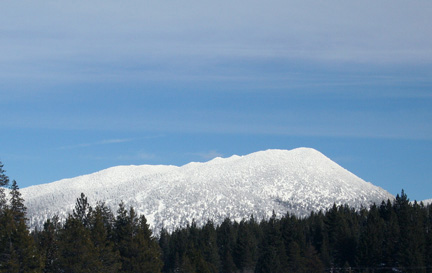| You love art...
even if you don't know it. Okay, maybe you're not "into" art. Maybe you don't shop galleries, pondering which paintings to buy. But you are still a lover of art. I bet you have pictures on your walls. Maybe they are just rock band posters or movie posters. Art, nonetheless. Often it seems that while we all have pictures on our walls, the concept of art as a serious pursuit seems complex and even intimidating. Give us a picture we like and we're happy. But start talking about it the way art history professors do and our eyes glaze over and our brains go numb. Yet I believe (and Owen would agree) that the reason we like pictures on our walls is that they are more than just pretty pictures. (See the conversation between Owen, Street and Ellie in TAHOE BLOWUP). Art helps us to understand our lives, gives us a way of seeing and thinking about life, and even cushions us against those aspects of the world that are stressful. Think about your favorite art pictures. Why do you look at them? I'll bet it is because they have an emotional component that draws you in. They may make you feel content or happy. Or they might connect to a great sadness you have and give you a sense that you're not alone. You may feel that the artist knew exactly a feeling you've experienced about a person, place or an event in your life.
|
Edward Hopper's New York Movie, mentioned in Tahoe Deathfall
Albert Bierstadt's The Sierra Nevada in California |
|
Rodin's Eternal Spring, mentioned in Tahoe Ice Grave
A Calder mobile, mentioned in Tahoe Ice Grave
|
Owen takes that experience one step further... If you've read my books, you know that Owen is not an art scholar in the manner of someone who studies art at the university. He knows little of the studio side of art (how it is made) and little more of the historical side (how a given work is significant in the larger picture and how the various art movements fit together). In fact, Owen is kind of an everyman's art fan. He reads serious art books and magazines and considers what the writers have to say, but he is as skeptical of endorsements made by museum curators as he is of those made by parents of toddlers full of color crayon promise. While Owen is not militantly resistant to what professional artists and art historians have to say, he is always aware that what the experts are convinced of today will be contradicted by the next generation of experts tomorrow. For example, some "experts" dismissed Matisse years ago. Now, Matisse is considered one of the greatest artists of his time. All this is a way of saying that Owen thinks for himself. Perhaps Sister Wendy said it best, (as discussed in TAHOE BLOWUP) that "Great art is what draws you back again and again."
|
|
What about the art discussed in the books? In TAHOE DEATHFALL, Edward Hopper's New York Movie is used to show how Owen can look into a painting about isolation (at least in Owen's opinion) and draw insights into his own life and the lives of the other characters he encounters in his case. That Owen feels a kind of attraction to the woman in the theater adds another layer to how art works. Is he nuts to feel drawn to a fictional character made of paint on canvas? Or does that show the power of art, that we can be pulled into it in many ways, both intellectual and emotional? In TAHOE BLOWUP, Owen studies Albert Bierstadt's The Sierra Nevada In California. He sees the painting as an essay on the sacredness of the natural world prior to man's interference. The painting is larger than life, more fantastic than the real Sierra, and that is no doubt what Bierstadt intended. The lesson Owen draws from the painting is that we should proceed with the greatest of care when we trample over the natural landscape. The painting illustrates the natural beauty that is lost whether we are merely interfering in natural processes such as putting out lightning-caused forest fires, or building another Walmart and literally "paving paradise," as Joni Mitchell wrote about in her famous song. |
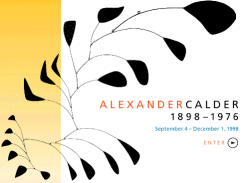
Another Calder mobile, mentioned in Tahoe Ice Grave |
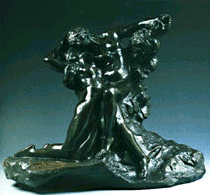
A bronze version of Rodin's Eternal Spring |
Calder and Rodin In TAHOE ICE GRAVE, Owen moves into the area of 3-dimensional art. Street has given Owen two small replicas of famous sculptures. One is a bronze of Auguste Rodin's Eternal Spring. The other is one of Alexander Calder's famous mobiles. Owen is struck by the contrasting nature of the two pieces. The Calder is fanciful, playful and full of movement. It is also an abstract piece with no obvious representation of anything in the real world. As such, Owen sees it as being a statement about balance and harmony. The engineering of pretty shapes becomes, for Owen, what the sculpture is all about. The Rodin, on the other hand, seems in many ways to be the opposite of the Calder. Not playful or fanciful at all, Eternal Spring is an earnest and very serious depiction of emotion, and Owen is drawn to the power of the passion between the two young lovers. Owen also sees that passion as being diametrically opposed to the "engineering" aspects of the Calder. To him, they are like a yin and yang of art. Balance and Passion. I should add a comment here about the way different people see art and think about it. Owen's view of art and the art world is just one of an infinite number of views. For example, near the beginning of TAHOE ICE GRAVE, Owen thinks about how he initially was uncomfortable with Rodin's work. The work is unabashedly earnest and even sentimental, qualities that many serious art critics take a pejorative view of. (Although most critics have much respect for Rodin and his work.) But over time, Owen comes to realize that he has no reservations about the work at all and simply enjoys it for what it is. |
| J.W. Turner
In TAHOE KILLSHOT, Owen has been looking at, and thinking about, Joseph William Turner's Snowstorm painting. The full title is "Snowstorm-steamboat off a harbour's mouth making signals in shallow water and going by lead." The painting hangs in the Tate Gallery in London. Unveiled in 1842, the painting was a sensation. Almost abstract, it amazed viewers of the day with its portrayal of the awesome power and fury of a blizzard on the ocean. While art scholars then and now consider a hundred metaphors that the painting provides, even going so far as to find complex statements on the burgeoning industrial revolution, Owen simply enjoys the depiction of light and movement. And he likes that it depicts so well the raw power of nature, something those of us in Tahoe experience every winter. When Owen starts to think about other meanings the painting may offer, his girlfriend Street Casey stops that line of thinking. She mentions Susan Sontag's essay Against Interpretation, which suggests that we would do better to just look at art for what it plainly shows us rather than trying to find deeper meaning.
|
J.W. Turner's "Snowstorm-Steamboat Off a Harbour's Mouth Making Signals in Shallow Water and Going by Lead" |
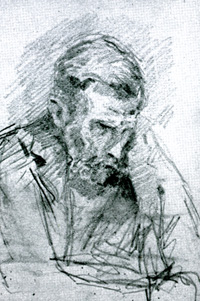
A drawing by Picasso when he was 14 years old
Self portrait by Picasso when he was 16 years old
|
Amazing Drawings by a Girl Named Silence
TAHOE SILENCE is about a 17-year-old autistic girl who can't speak, write or use sign language. Thus her nickname Silence. Because she is unable to speak, her doctor and others believe she is profoundly retarded. One thing everyone agrees on, however, is that she has an astonishing ability to draw. Despite her communication handicap, she learns to use this prodigious art talent to communicate. Although she has always made sketches, at the young age of 17 she can scarcely have acquired her drawing ability through practice alone. Craft and skill can be practiced and focused, and many adults, with sufficient effort, can become fairly skillful drawers. But children who have amazing drawing ability are like children who can perform feats in any of the arts. They are hard-wired with talent and the desire to use it. To give an example of what I was envisioning when I dreamed up the character of Silence, I thought of other children who have demonstrated incredible drawing skills. Pablo Picasso was one of those kids. Even though he was a dedicated artist from the beginning, one look at the drawings on the left will show that he had something extra that ordinary people do not. This was something like how I imagined Silence would draw. When Silence is kidnapped and begins to learn to communicate through her drawings, Owen tries to interpret them. Eventually, the entire story hinges on how Silence turns an amazing artistic ability into a substitute for spoken and written language. |
| The First Paintings
Without People
In TAHOE AVALANCHE, Owen has been looking at a book with Chinese landscape paintings. The Chinese are credited with doing the first paintings where the "people were left out!" This new invention of landscape paintings, took place in the 10th Century during the Sung Dynasty. The paintings were done with ink on silk. The example to the right shows a little of the fantastic subtlety and nuance that the artists were able to achieve with only one color of ink. From the smallest detail to the broad washes that created mist and clouds, those early Chinese landscape painters created haunting images. In TAHOE AVALANCHE, Owen is with an underworld mobster in San Francisco's Tenderloin District investigating explosives that were used to set off avalanches, when he learns that 15th Century Japanese painters were so taken with the Chinese landscapes from 500 years earlier, that they copied them in every detail. In fact, the Japanese painters did what are now considered to be some of the finest "Chinese Landscapes" ever painted! As Owen pursues a killer who uses avalanches as a murder weapon, he often visualizes those Chinese landscapes and sees similarities to Tahoe's landscape. |
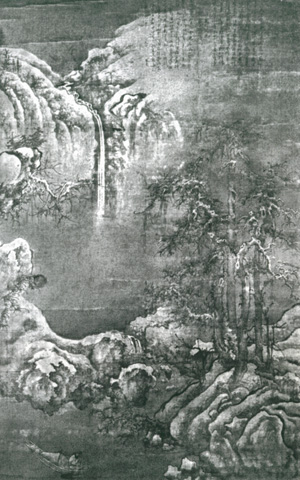
A Sung Dynasty landscape painting, 1000 years old |
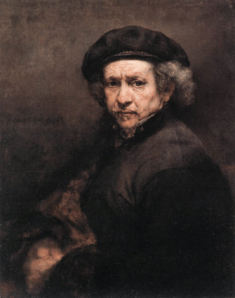
|
The Quality of the Painted Surface is Lousy The Quality of the Image is Amazing TAHOE NIGHT is about a TV talk show host who unwittingly gets involved in a deadly art forgery. Leah Printner is involved in a car accident that kills her husband and scars her face, ending her TV career. When her father is murdered, and the killer makes an attempt on her life, Owen McKenna hides her on a sailboat out on Lake Tahoe. He discovers that the killer has a fixation on Grendel, the fictional monster from the epic poem Beowulf. As Owen unravels the mystery, he learns of an art forgery that possibly dates back to early 17th Century Holland. Owen travels to New York to meet an FBI informant at the Metropolitan Museum of Art. The man brings up questions of authenticity about famous paintings such as Rembrandt's self-portraits. Calling TAHOE NIGHT an "Action-Packed Thriller," Kirkus Reviews went on to describe the book's "Worthwhile advice based on meticulous research explaining how to forge and frame and Old Master." |
| A Painting that
Captivates a Little Girl In TAHOE HEAT, Owen pulls out his monograph on Matisse to show Lily one of Matisse's paper cutout images. The cutout painting is of course beautiful. But it is also a lively example of how metaphor in painting need not be tedious or pedantic. In the book, Lily, a precocious little girl of five or six, notices both the similarities and the differences of the rider and the clown. More importantly, she notes that small changes in an image can make a big difference in meaning. Owen doesn't pay much attention until he gets close to figuring out the identity of the killer. He has been struggling to understand a message that a piano tuner left encoded in the vibrating strings of a piano. He suddenly remembers what Lily had said about the painting, and he has an epiphany that reveals the code and the identity of the killer. The Horse, the Rider, and The Clown is a fun painting that also serves the story TAHOE HEAT very well. The painting hangs in the museum at Cornell University.
|
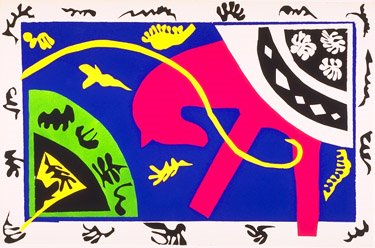
Matisse's The Horse, The Rider, and The Clown |
|
This is Thomas Hill's Great Canyon of the Sierra, Yosemite, painted in 1872. Six feet tall, by ten feet wide, it is a huge and spectacular oil, and its lucky home is the Crocker Museum in Sacramento. In TAHOE HIJACK, Owen takes a break from the action to page through a monograph he has on Thomas Hill. Viewing Hill's amazing landscapes helps Owen keep his perspective on those things in life that really matter.
|
Picasso's Guernica figures prominently in the story of TAHOE TRAP. The painting depicts the tragic bombing by the Nazis of the Basque city of Guernica during the Spanish Civil War. In TAHOE TRAP, a 10-year-old, orphan boy named Paco Ipar is being pursued by contract killers. Detective McKenna learns that the boy may have Basque heritage and that the painting of the Guernica bombing may hold clues to the case.
A huge painting nearly 30 feet long, Guernica hangs in the Reina Sofia museum in Madrid |
| Art From The Next Book
Here is where I should put some art from the 11th book in the Owen McKenna series, the one I'm currently writing. Hmmm... I've got a few ideas bubbling somewhere in the fog way, way down in the deepest cellar of my thick skull. I'm looking down through the opening of the shaft. I can see something in the mist, but I can't tell what it is. A painting? A sculpture? Something is moving. Maybe it's a performance artist. I can see some bright colors. There's a bright flash of light. Just out of sight, near the bottom of the ladder. Somebody is moaning. Spot is making a deep, low growl. The lights go out. It is so dark, inky dark, darker than your worst nightmare. It's hard not to be afraid... Stay tuned...
|
The Value of Art
The moral is that people should enjoy art in whatever way they want. To study it and learn about it in an academic way is wonderful. But never let peer pressure or comments by experts tell you what not to like. Experts are important and useful in all fields. But in the arts especially, history has shown that the next generation of experts may well embrace what the preceding experts dismissed. Wow, What a Giant Mistake... A famous example is when photographer Alfred Stieglitz (husband of Georgia O'Keefe) brought to his gallery Picasso's first show in the United States. Stieglitz then introduced the work to the head of the Metropolitan Museum of Art, one of the most important art museums in the world. The man took a look at Picasso's work and dismissed it entirely. He could have bought the entire collection of paintings for approximately $25,000, but instead thought it unimportant. Considering that those Picasso paintings are now worth uncountable millions of dollars and are considered some of the most important paintings in the world, this was, at least financially if not in all ways, one of the most astonishing oversights in the history of art. Incidentally, this does not just apply to the visual arts. It has happened with novelists, classical composers, songwriters, poets, choreographers, musicians, playwrights, cartoonists, filmmakers. Go to any university and you'll find humanities instructors giving serious discussion to artists of all fields who were considered insignificant in their time and in some cases were even thought of as hacks. Use your own judgment,
So when you see a work of art you like, enjoy it and don't let anyone tell you otherwise. |
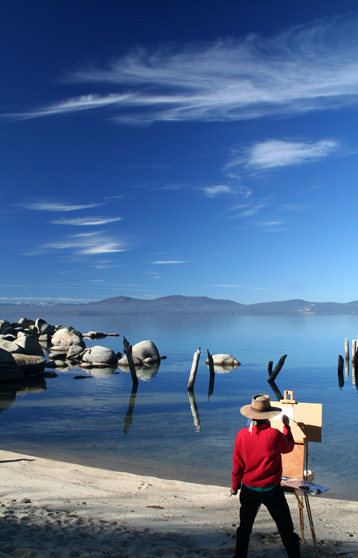 |
To the left is one of Tahoe's many, many artists, painting at Skunk Harbor, a major setting in TAHOE NIGHT. (Skunk Harbor is a nearly secret beach that you can only get to by hiking.) Gee, I wonder why Tahoe has so many landscape artists?
This is Heavenly Mountain after one of those frequent storms that coat all the trees with a thick coat of white snow. |

Home Books Bio Owen Spot TahoeTour Art Danes Speaking Events Order Contact
